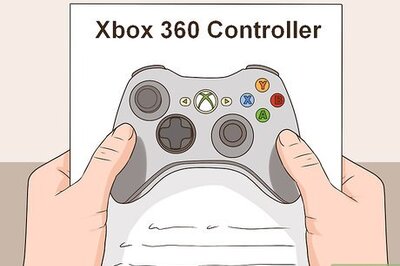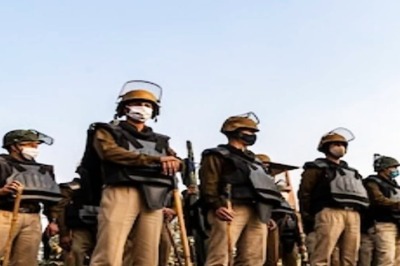
228
views
views
In its 75 years of existence, India's neighbour Pakistan has seen several political upheavals resulting in more than 20 prime ministers
In the 75 years of its existence, Pakistan has never seen a single prime minister complete a full term in office. Starting from the assassination of Liaquat Ali Khan four years after remaining in office in 1951 to Imran Khan’s no-trust motion there has been several upheavals leading to dissolved governments as well as assassinations.
- Pakistan’s first prime minister Liaquat Ali Khan was chosen to lead the country following its independence in 1947. He remained in power till October 1951 and was unable to complete a full-term since he was assassinated while addressing a rally at Rawalpindi’s Liaquat Bagh, once known as Company Bagh. Khan was prime minister from August 15, 1947 to October 16, 1951.
- Following Khan’s death, Khawaja Nazimuddin was appointed the prime minister of the nation. He ruled for approximately 1 year and 6 months until deposed by governor-general Ghulam Muhammad for being unable to contain riots in then-east Pakistan and parts of Lahore. Nazimuddin was prime minister from October 17, 1951 to April 17, 1953.
- Governor-General Ghulam Mohammad nominated Mohammad Ali Bogra, who earlier served as the nation’s envoy to the United States. Bogra led the nation for 2 years and 3 months but his government was dissolved as he tried to clamp down on the powers of then-governor general of Pakistan Ghulam Muhammad. Bogra was prime minister from April 18, 1953 to August 11, 1955.
- Pakistan would then see almost a decade under martial law imposed by General Ayub Khan. Before the martial law was imposed, between 1955 – 1958, Pakistan saw four changes to the post of the prime minister. Mohammed Ali, Hussain Shaheed Suharwardi, Ibrahim Ismail Chaundrigar and Feroz Khan Noon were all chosen to lead but their governments collapsed following depositions of lawmakers among other reasons.
- In 1971, a lawmaker from then-east Pakistan, Noor-ul-Amin was chosen to lead the nation. His government lasted only for 13 days.
- Following Pakistan’s defeat to India in the 1971 war which led to the independence of Bangladesh, Zulfiqar Ali Bhutto took over the role of the president. In 1973, he took over the role of the prime minister and remained in power until 1977 after which he was overthrown due to coup d’etat staged by Pakistan army general Muhammad Zia-ul Haq. He was the prime minister from August 1973 to July 1977. He was hanged to death in the year 1979.
- Muhammad Khan Junejo was the next leader to become the prime minister. Pakistan army general Muhammad Zia-ul Haq also oversaw the fall of his government as hostility between both increased. He was the prime minister of Pakistan from March 1985 to May 1988.
- Following Junejo’s overthrow, Benazir Bhutto, daughter of Zulfiqar Ali Bhutto was elected prime minister and Pakistan’s first woman prime minister after the 1988 elections. She led the nation from December 1988 to January 1990. Her government was dismissed by president Ghulam Ishaq Khan on August 6, 1990, who accused the government of nepotism and corruption.
- Ghulam Mustafa Khan Jatoi was appointed caretaker prime minister for three months.
- After Bhutto, Nawaz Sharif was chosen to lead Pakistan. He clashed with Ghulam Ishaq Khan and went to court after the former chose to dissolve the Pakistan National Assembly. His government was in power from November 1990 to April 1993.
- Balakh Sher Mazari was appointed caretaker prime minister for one month.
- Sharif again came to power and was the prime minister of Pakistan for two months. He was allegedly forced to resign due to his differences with the Pakistan army and its intelligence module Inter-Services Intelligence (ISI).
- Moin Qureshi was appointed caretaker prime minister for three months.
- Benazir Bhutto became the first woman prime minister to be elected twice. She ruled until 1996 when president Farooq Leghari removed her from power citing irregularities with respect to provisions of the constitution. Her second term lasted from October 1993 to November 1996.
- Meraj Khalid was appointed caretaker prime minister for four months.
- Nawaz Sharif again rose to power and remained the prime minister for roughly two years but was overthrown in a coup plotted by Pakistan army general Pervez Musharraf who took over the role of the president. Sharif’s stint lasted from February 1997 to October 1999.
- Mir Zafarullh Khan Jamali, Chaudhary Shujaat Hussain and Shaukat Aziz ruled for a total of four years and 11 months.
- Muhammad Mian Soomro was appointed caretaker prime minister for four months.
- Yousaf Raza Gillani became the prime minister in 2008 after winning the elections. Under his rule the assembly voted that the judiciary will have the power to remove governments and prime ministers. Gillani was, however, ousted in 2012 after he failed to initiate corruption proceedings against Asif Ali Zardari. He was the prime minister from March 2008 to April 2012.
- Raja Pervez Ashraf was appointed prime minister to lead Gillani’s government until 2013.
- Hazar Khan Khoso was appointed caretaker prime minister for three months.
- Nawaz Sharif again was chosen to lead Pakistan for the third time following his victory in the 2013 elections. The Panama papers offshore accounts case and his involvement led to his resignation and he was also arrested for charges related to corruption. His third stint as Pakistan PM lasted from June 2013 to July 2017.
- Shahid Khaqan Abbasi and retired justice Nasir-ul-Mulk were prime ministers between August 2017 to August 2018 – with Nasir-ul-Mulk being a caretaker prime minister – following which Imran Khan was voted to power.
Read the Latest News and Breaking News here




















Comments
0 comment